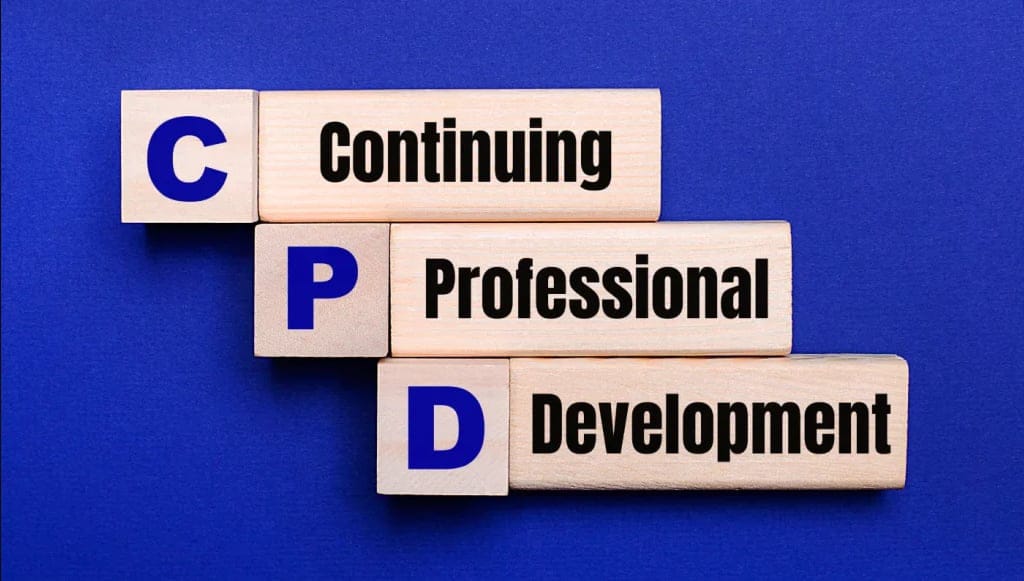Staying current with industry trends and enhancing skills is essential. Continuous Professional Development (CPD) has emerged as a fundamental practice to ensure professionals remain competent, efficient, and relevant in their respective fields. This blog explores what CPD is and the benefits it offers for both employers and employees. It also discusses steps to create an effective CPD plan, different learning types, and some examples of CPD courses.
Table of Contents
What is CPD?
Continued Professional Development (CPD) is the process of continually improving and updating one’s skills and knowledge throughout their professional career. It involves a variety of learning activities such as training courses, workshops, seminars, conferences, online learning and practical experiences, all aimed at enhancing professional capabilities.
CPD ensures that individuals stay current with the latest developments, standards and practices in their field, thereby maintaining and improving their competence and performance. It is a lifelong commitment to personal and professional growth, enabling professionals to adapt to changing job requirements and advance their careers.
What are the Benefits of CPD?
Continued Professional Development offers significant benefits that can be viewed from two perspectives: the employee and the employer.
For Employees:
- Prevents Obsolescence: Regular CPD ensures that academic and practical qualifications stay current, preventing them from becoming outdated.
- Encourages Upskilling: Enables individuals to continually upskill or reskill, regardless of occupation, age or education level.
- Boosts Confidence and Credibility: Participation in CPD can enhance an individual’s confidence and credibility within their field.
- Opens Up Opportunities: This presents opportunities to explore new career options or progress to higher positions.
- Promotes Lifelong Learning: Continued Professional Development is fundamental in fostering an ongoing commitment to personal and professional development.
For Employers:
- Maintains High Standards: Encouraging and funding Continued Professional Development helps maintain high and consistent standards across the organization.
- Enhances Employee Engagement: Continued Professional Development initiatives can increase staff engagement and dedication to their roles.
- Builds Trust: By maintaining a highly skilled workforce, organizations can improve public trust in their professional standards and practices.
How to Develop An Effective CPD Plan
Here’s how individuals can create an effective Continued Professional Development plan:
1. Setting Personal and Professional Development Goals
Set clear, achievable goals that align with your long-term career aspirations and immediate professional needs. Identify where you want to be in the future, considering desired roles and required skills and knowledge.
2. Identifying Relevant CPD Activities and Resources
Seek out courses, workshops, seminars, webinars, and conferences that match your goals. Online CPD courses are particularly useful for their flexibility and wide range of topics. Use various learning methods like formal education, on-the-job training, self-study and professional events.
3. Creating a Schedule and Tracking Progress
Create a structured schedule to stay on track and make consistent progress. Break goals into manageable tasks with deadlines, ensuring your timeline is realistic. Periodically review and adjust your plan to accommodate new opportunities or challenges.
4. Evaluating and Reflecting on CPD Outcomes
Evaluate each Continued Professional Development activity to understand its impact on your practice. Seek feedback from peers, mentors or supervisors to identify areas for improvement. Reflect on your overall Continued Professional Development journey, document your insights and update your plan regularly to keep it relevant and aligned with your career goals.
CPD Learning Types
Continued Professional Development can be categorised into three distinct types, each serving different learning preferences and professional needs. Here’s a deeper look at each type:
- Structured Learning:
- Courses, Workshops and Seminars: This involves more formalised educational settings where professionals can learn new theories, acquire new skills or gain certification. Experts often lead these and are structured to provide comprehensive learning on specific subjects.
- Accredited Programmes: Many professions require particular courses to maintain or advance professional status. These structured programmes ensure that professionals meet industry standards.
- Reflective Learning:
- Peer Discussions and Team Meetings: Reflective learning often occurs in group settings where peers discuss their experiences and reflect on their own and others’ practices.
- Practical Application: Implementing new skills or theories directly at the workplace allows professionals to reflect on their applicability and effectiveness in real-time situations.
- Self-Directed Learning:
- Reading Industry Literature: Professionals may read books, research papers and industry articles to keep up-to-date with their field.
- Online Forums and Communities: Engaging with online platforms and forums allows professionals to discuss and share knowledge and experiences with peers globally, fostering a broader understanding of their field.
Some Examples of CPD Courses
Here are some examples of Continued Professional Development courses that professionals can undertake to enhance their skills and knowledge:
- HR Compliance Training: HR compliance training covers employment law, workplace policies, and regulatory requirements to ensure legal compliance.
- Project Management: Focuses on project planning, execution, and management techniques.
- Leadership and Management Development: Focuses on enhancing leadership skills, strategic thinking, and team management.
- Technical Skills Enhancement: Includes courses that develop technical skills such as software development, data analysis, and cybersecurity.
- Health and Safety Training: Provides knowledge of workplace safety regulations, risk assessments, and emergency procedures.
Final Thoughts
Continued Professional Development is a means to enhance one’s skill set and a crucial aspect of maintaining professional standards in any field. It serves a crucial role in cultivating a culture of ongoing development, inspiring and motivating individuals to strive for improvement continually. Continued Professional Development ensures compliance and efficiency and enhances career opportunities and job satisfaction. By investing in Continued Professional Development, employees and employers can achieve mutual benefits, contributing to personal growth and an organization’s overall health and success.
